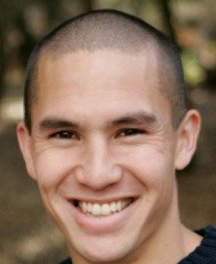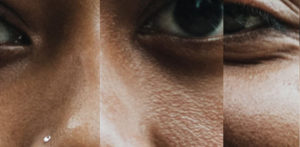
 EDITOR’S NOTE: Sunday, Feb. 14, is Racial Reconciliation Sunday in the Southern Baptist Convention. For downloadable bulletin inserts for churches, click here.
EDITOR’S NOTE: Sunday, Feb. 14, is Racial Reconciliation Sunday in the Southern Baptist Convention. For downloadable bulletin inserts for churches, click here.
HOUSTON (BP) – “Daddy, he looks like me!” My young Black son pointed to the only Black basketball player on the court that night at my overwhelmingly white seminary. Even at a young age, he immediately felt represented by the one man on the court who shared his appearance. Without knowing it, my son was experiencing “representation.”
Representation can describe either the way different kinds of people are portrayed or the presence of someone who represents something about us. The way different kinds of people are portrayed is important, because it shapes both the perception and self-perception of their group. Similarly, the absence or presence of people like ourselves can send a powerful message about how we might be received in a group we’ve encountered.
It was good for my son to see a man who represented him on the court that night. But if he grows up seeing Black men portrayed only as athletes or entertainers or criminals, he’s being told that athleticism or entertainment are requirements for his success – and that criminality is a way society might view his manhood. In the same way, if my Black daughters grow up with only classic American dolls, they’re subtly learning that light peachy skin and straight blonde hair and baby blue eyes are the standard – a mono-cultural image they can never replicate, and one that discounts their own striking features.
For those on the fringes, being represented signals two main possibilities. The first is inclusion. When a Chinese man walks into an American church and sees people from his culture already present, belonging looks possible. When an elderly woman sees grey hair on the worship team, she can feel the possibility of participating. When the youth group sees a fellow teenager baptized, they can sense that grace and change are possible for someone their age. Representation embodies the possibility of belonging, participating, and being included.
But inclusion alone is not enough. Representation is needed at a higher level – the level of influence. All believers are a “holy priesthood” (1 Peter 2:5). In Christ there is no Jew or Gentile, male or female, slave or free (Galatians 3:28). And the body of Christ needs every part fully operational in order to mature (Ephesians 4:15-16). Therefore, a healthy church or organization will always be identifying and removing barriers to biblical forms of influence.
We can start by initiating conversations and hearing people’s perspectives. If we don’t pursue that family with special needs, who will tell us how our ignorance might be keeping them from full participation? If the elderly have no voice in our churches, who will let us know when we’ve skewed so contemporary that we’re unhinged from our own heritage? If a multiethnic group is led by monoethnic leadership, who will point out cultural idols, blind spots, missteps, needs and opportunities? Most important, if our churches and movements and organizations remain homogenous, how will we make up for all the virtue, knowledge, talent, experience and vision that our varied brothers and sisters are ready to bring to the table?
In Acts 6, when the Gospel is spreading and the church is becoming more diverse, racial tensions ignite. The Greek-culture Christians lodge a legitimate complaint because their widows aren’t being cared for like the Jewish-culture widows (Acts 6:1). The church’s response is a masterclass in humble, strategic, unified representation. The apostles admit there’s a problem, they involve the whole church, and the church appoints seven Spirit-filled leaders to expand the care ministry across racial lines (Acts 6:2-3). Strikingly, all seven appointees have Greek names (Acts 6:5).
The Jerusalem church recognized that Hellenistic believers would be most effective at serving the widows from their own culture. Racial inequity was acknowledged, a homogenous team was diversified, “and the word of God continued to increase, and the number of the disciples multiplied greatly in Jerusalem” (Acts 6:7).
Our family once toured a Christian school that was almost exclusively white. We asked about racial diversity, but rather than recognizing its absence, the principal emphasized their handful of black students – by name. She had fallen into a common trap that sees token representation as meaningful diversity. We would’ve been more encouraged if she’d acknowledged the lack of representation and explained how her team would be thoughtful learners and leaders. Yet this same administrator would later disallow our Black daughter from having a typical black hairstyle because of a monocultural policy ignorant about the intricacies of black hair. We appealed as winsomely as we could, but it didn’t matter. Only one kind of accessory was allowed: “Just put a ribbon in it like all the other girls!” she told my wife. Black women everywhere know how naïve this sounds. But there was no one else to help this leader see what she didn’t know – or to help her team reevaluate the deeper assumptions keeping their school an ethnocentric community.
As a pastor, I want to be a leader who listens. I want to know when people are being left out. An empty-nester recently told me that one of his adult sons said he wouldn’t fit at our church because he has a big beard and tattoos. I’d like to think he’d be welcomed, but there’s a reason he feels like an outsider, so I’ve kept his comments in mind.
I was recently talking with a Japanese family new to the States and growing in their English. They were attending a Christian church – our church – for only the second time in their lives. As I talked with them after the service, I wondered: Had I preached clearly enough for them to understand? Was I thinking about people like them in our international city? Or had I gotten caught up in the moment, maximizing my vocabulary to engage only a certain kind of person here in west Houston? There’s always a balance, but had I considered second-language souls like this new couple when calibrating my approach? In the global city where I serve, I should.
As God’s divine Son, Jesus represents God to us, and as our human high priest, he represents us before God (John 1:18; Hebrews 1:3; 2:14-15). To represent us, “he had to be like his brothers and sisters in every way” (Hebrews 2:17).
When we look to Jesus, from incarnation to ascension, we see a full human being. Jesus is human, like us, but lived righteously. Jesus was tempted, like us, but never sinned (Hebrews 4:15). Now that we’re united with Him by faith, we share in all that belongs to Him: His righteousness, His sonship, His ministry, His family and His future.
The message is clear: Our salvation and service, our redemption and participation, our inclusion and influence, are all possible not only because Christ is God, but because He came as the God-man – because, in my little boy’s words, “He looks like me!”
This article is an excerpt of one posted at ERLC.com. Read the full version here.
David ‘Gunner’ Gundersen is a pastor at BridgePoint Bible Church in Houston.















